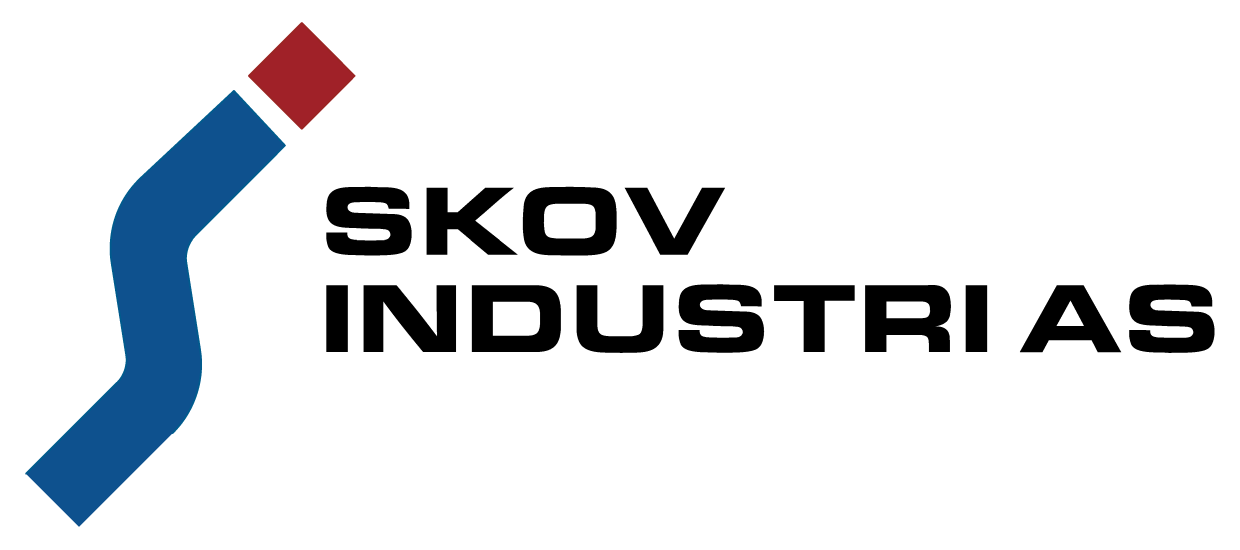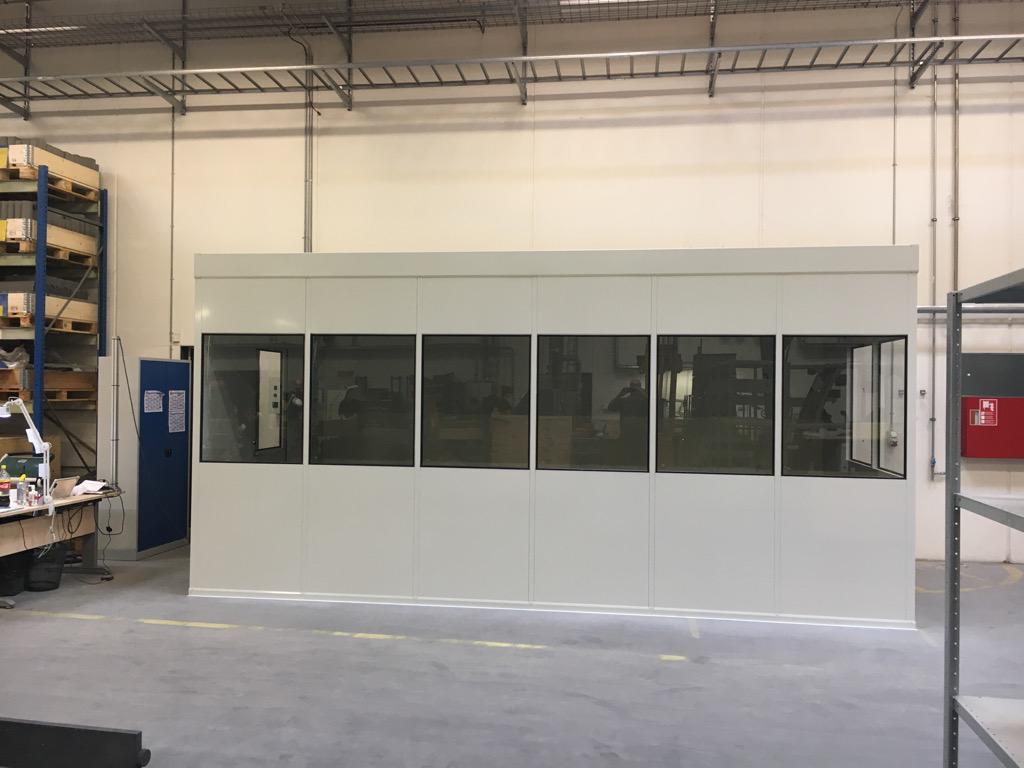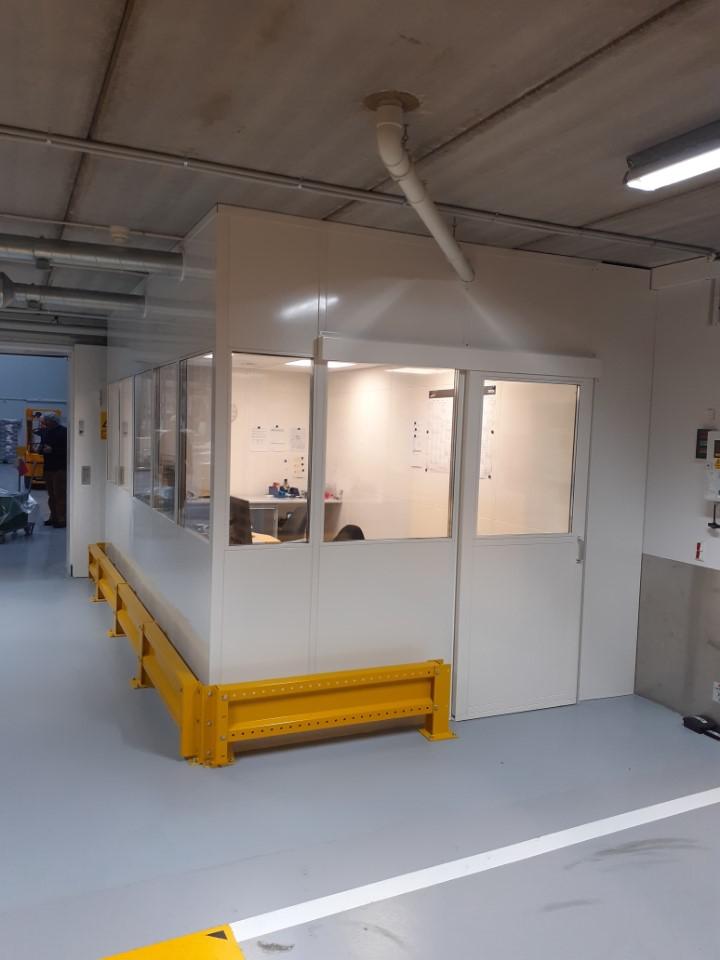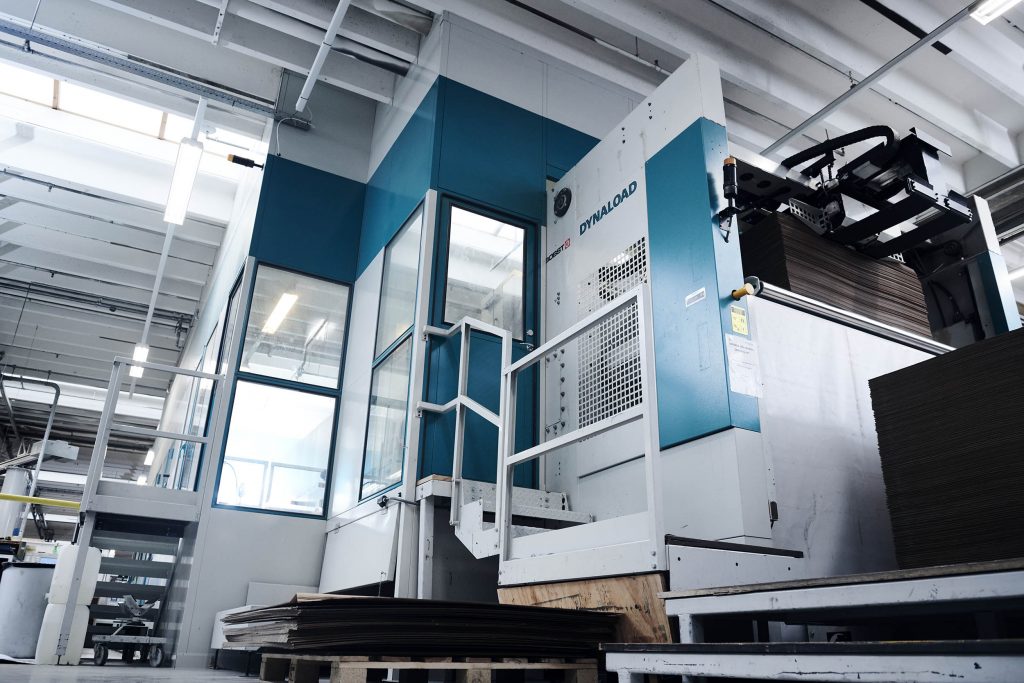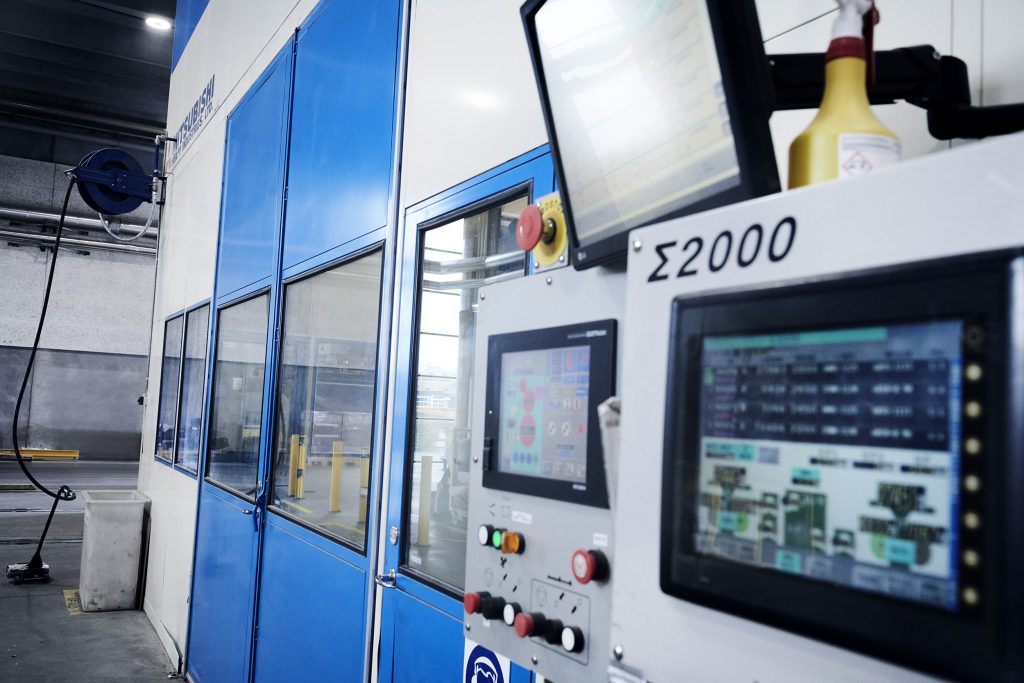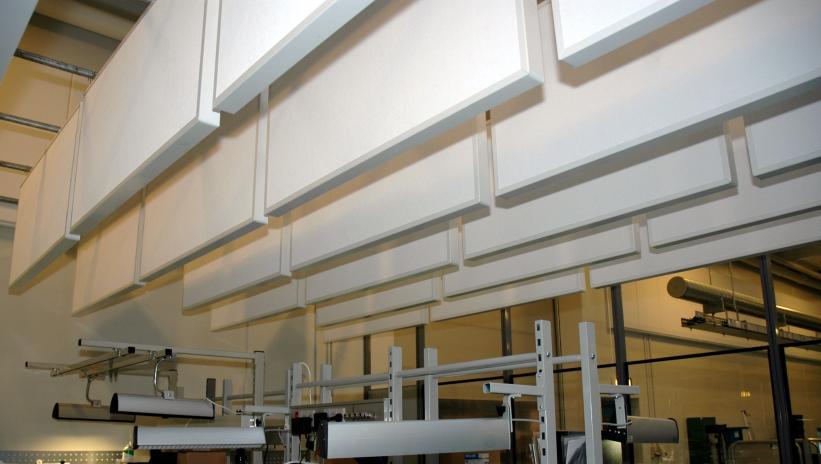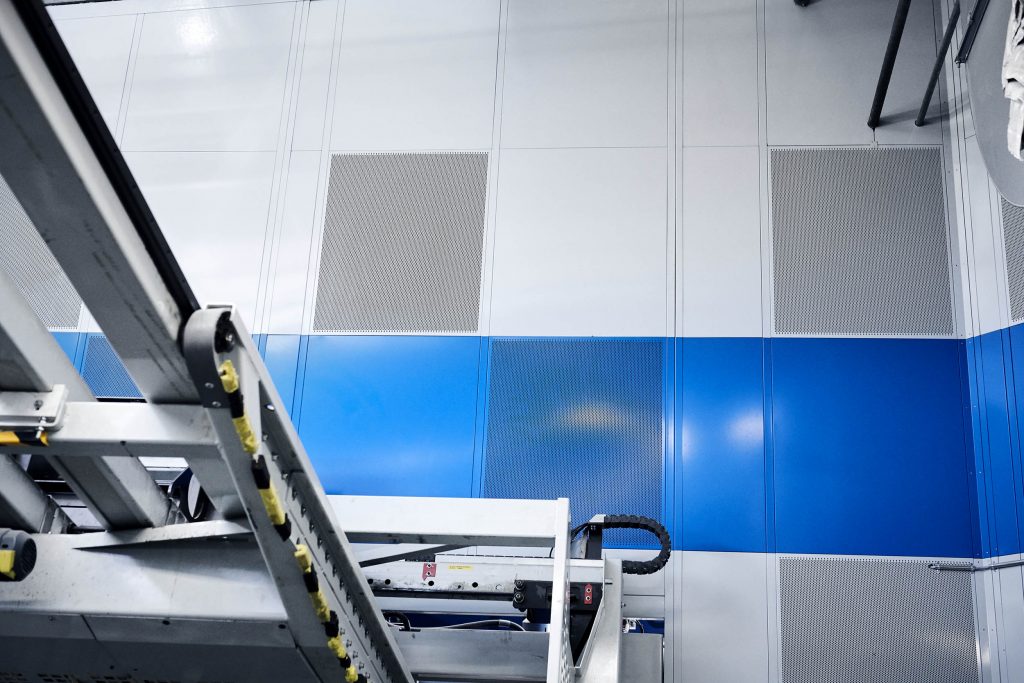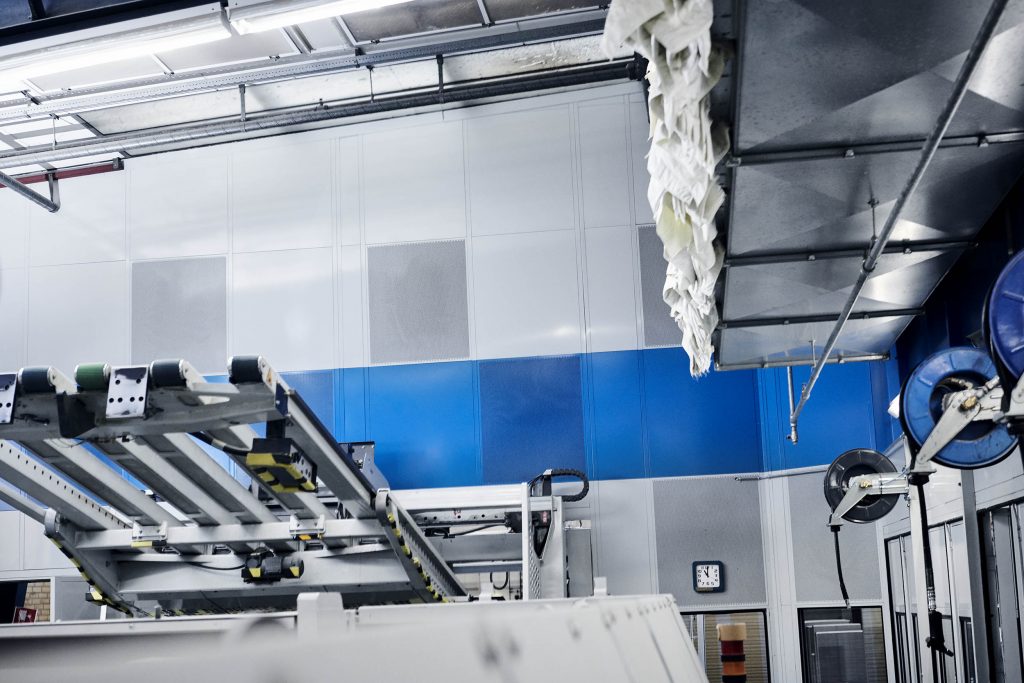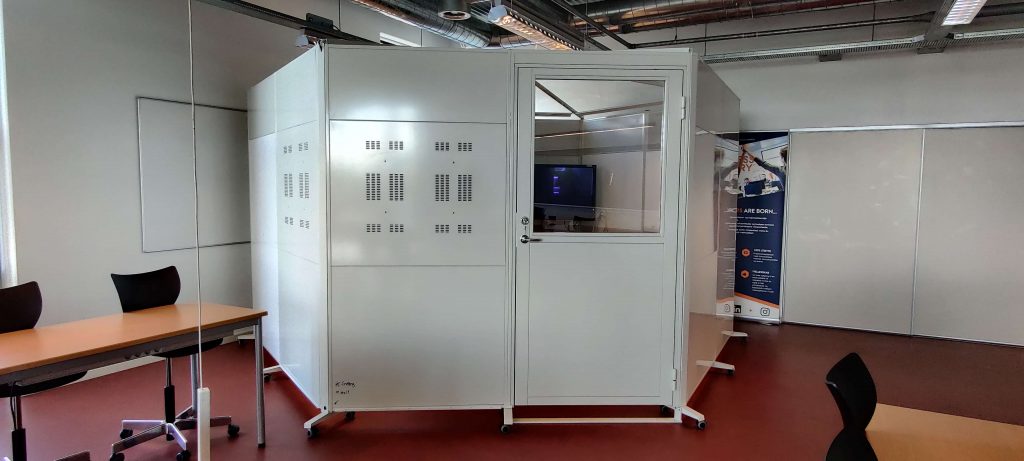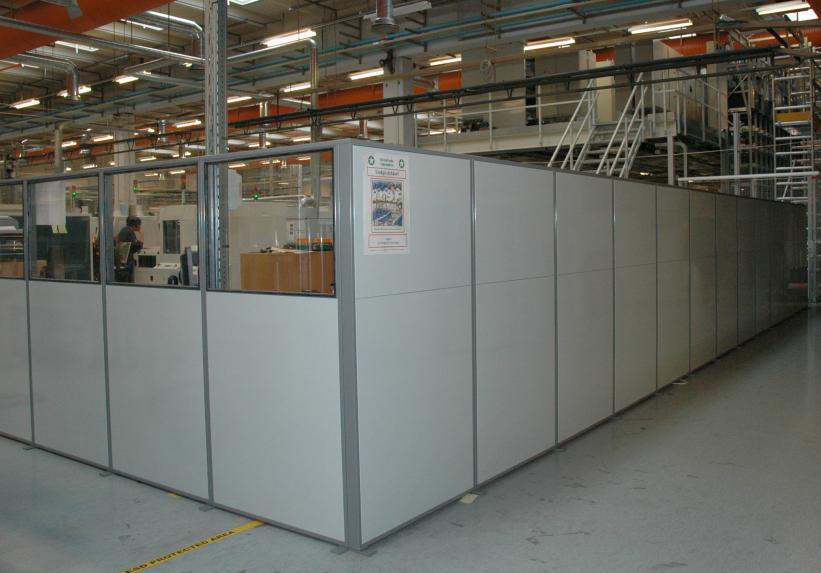Noise regulation
Noise regulation through acoustic regulation, sound insulation and sound screens improves the sound environment in both offices and industrial areas. These solutions reduce unwanted noise and create a more pleasant and productive working environment. Ideal for companies that want optimal noise control and better well-being for employees.
What is sound insulation?
Sound insulation is about dampening the direct noise, e.g. through a wall.
When you have to describe how good a wall (or something else) is at reducing direct noise, you use the reduction number R, which is measured in dB.
A high number means that the sound is strongly attenuated when it passes through the wall (or something else)
The reduction figure usually varies greatly with frequency.
When assessing soundproofing properties, it is therefore necessary to know how the frequency content is in the sound that needs to be dampened.
The reduction numbers in the different frequency bands can be added up to a single number, the weighted reduction number, which is called RW and is suitable for speech and noise, which generally have a wide frequency spectrum.
More narrow-band noise should be evaluated based on R in the respective frequency band.
When you evaluate stated R and RW, you must note that they are measured under laboratory conditions.
It is therefore our rule of thumb that the real reductions are a few dB lower:
- For R above 60 dB, 6 dB should be deducted
- At R between 50-59 dB, 5 dB should be subtracted
- At R between 40-49 dB, 4 dB should be subtracted
- Etc
Noise can be transmitted in many ways, in addition to through walls, e.g. through doors, windows, leaks, installations, etc.
Sound through walls
For the simple wall consisting of solid board, the insulation is determined that the weight of the board per flat and of the frequency. Theoretically, R increases by 6 dB every time the frequency is doubled or every time the plate weight is doubled.
R improves significantly if a double plate wall is used and even more so with absorbent between the plates.
Our MATADOR walls are optimal for soundproofing as:
- Is a double plate steel wall
- Is made of steel, thus heavy
- Has heavy absorbent between the sheets
- Standard takes up only 60 mm
- Standard has RW 44 dB
- Can be adapted to any desired RW
Sound through doors and windows
Sound-insulating doors and windows are available in 6 categories 25, 30, 35, 40, 45 and 50 dB. They can be expected to have a RW of at least the labeling value minus 3 dB when installed according to the manufacturer’s instructions. It is important that the seals between the wall and the frame are made carefully.
A great sound insulation of windows can be achieved via so-called sound windows, which are double-layered glass, where the 2 glasses have different thicknesses.
Our MATATOR windows and windows in doors are characterized by the fact that they can be adapted to all of the above 6 categories.
Openings
Openings, e.g. holes and gaps, can significantly reduce sound insulation.
It may be necessary to have holes in the wall for transport systems, ventilation, pipe passages and the like. The holes should therefore be fitted with sound barriers or otherwise sealed.
At Skov Industri, we have 35 years of experience in carrying out these seals and sound barriers.
The reduction number for a composite surface
A wall, e.g. in a machine enclosure, must normally be provided with windows and doors, ventilation and much more. This will usually result in a lower noise isolation than the wall itself.
If you know the area conditions and the RW of the individual elements, it is possible to calculate the total RW for a composite cabin, and we naturally take that into account.
Requirements for airborne sound insulation
The requirement for airborne sound isolation of a separation between a noisy and non-noisy area should at least ensure that the company’s current noise level can be met.
If you have any questions about sound insulation, please feel free to contact us, it is non-binding.
What is acoustic regulation?
Noise from a machine consists of the directly radiating sound and the sound that is reflected from the surfaces of the room.
If the distance from the machine (the noise source) is increased, the directly radiated noise decreases, but the reflected sound is constant everywhere.
Only if the surfaces of the room are lined with sound-absorbing material will the reflected sound be dampened.
In general, a sound measurement cannot distinguish between the contributions of the direct and the reflected sound, so they are recorded under one.
Especially the reflected noise is annoying, even at low noise levels.
We therefore recommend that you use acoustic regulation as part of the work with noise.
Reverberation time
The soundproofing properties of a room can, among other things, is characterized by reverberation time.
When a sound source is suddenly interrupted in a room, due to reflections it takes a certain time before the sound dies out.
The time it takes for the sound level to decrease by 60 dB is called the reverberation time.
Measurement of reverberation time is defined in ISO 3382
ISO 3382 recommends that 2 source positions and 3-4 microphone positions be used.
In practice, however, reverberation times can often be calculated if you know the reflecting surface and its area.
Contact us if you want to know more about these calculations.
Absorption coefficient
The absorption coefficient is a measure of the sound energy that is absorbed by a given surface in relation to the energy that hits the surface.
The absorption coefficient depends on the frequency of the sound, and is usually stated by the manufacturer. The higher the frequency, the higher the absorption.
The requirements of the Working Environment Authority
You will find the Labor Inspection Authority’s requirements and guidance regarding acoustics here
But you are also welcome to contact us if you want to know more.
Use of absorbent material
If you set up a qualified amount of high-quality absorbents on the hall’s ceilings and walls, experience can lead to a noise reduction of 3-5 dB, which is close to halving the part of the noise that damages the ear.
We recommend, as a rule of thumb, that 80% of absobents are placed on the ceiling and 20% are placed on walls, at ear height approx. 150 cm from floor.
Setting up absorbent material brings a number of other benefits:
- The improvement will benefit everyone employed in the hall. The room becomes significantly less bothersome to stay in
- Ceiling absorbers are a prerequisite for screen walls to work well.
When choosing an absorbent type, there are a number of requirements that should be met:
- High absorption in the entire frequency range (thick and open surface)
- Must not cause fallout of dust or fibers (The surface is treated by the manufacturer, without loss of absorption)
- Do not shade light (Possibly lower lighting fixtures)
- Use baffles and floats if the space is tight (Especially regarding the ceiling)
- Do not paint after (Removes open surface and thus reduces absorption)
- Acoustics on walls should be able to withstand a certain degree of impact (Robust)
- Hygienic absorbents must be used in the food and pharmaceutical industry
Contact us if you want to know more about acoustic regulation of rooms, it is non-binding.
What are baffles/wall partitions?
Sound screens are a common term for fixed or mobile screens between noisy and quiet activities, often called screen walls, as they can screen for things other than noise.
Especially if the sound is high-frequency, and you can place the screen wall close to the noise source, you can often dampen the noise simply by using a screen wall.
Requirements for a free-standing screen
In order to achieve maximum utilization of the screen, one must avoid that the sound is reflected from the limiting surfaces of the room.
- The most important thing is that the ceiling is sound absorbent, at least in an area above the screen
- Place the screen as close to the noise source as possible, alternatively as close to the receiver as possible
- The side of the screen facing the noise source should be absorbent
- The screen must be at least so high that the line of sight between noise source and receiver is broken, and the higher the screen wall, the greater attenuation is achieved
- The screen should be able to withstand the chemicals and cleaning agents used
- In practice, it is our experience that a screen’s attenuation rarely exceeds 15 dB. We can pre-calculate how much attenuation our screen walls will provide
See more about our screen walls here
You are also welcome to contact us if you want to know more about screen walls
